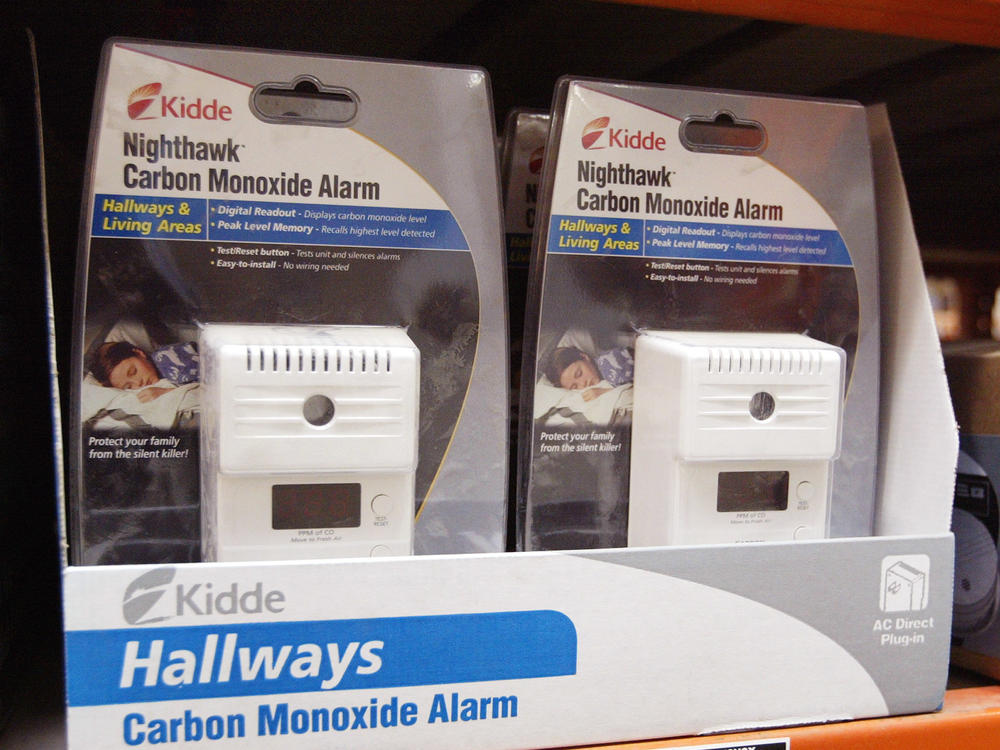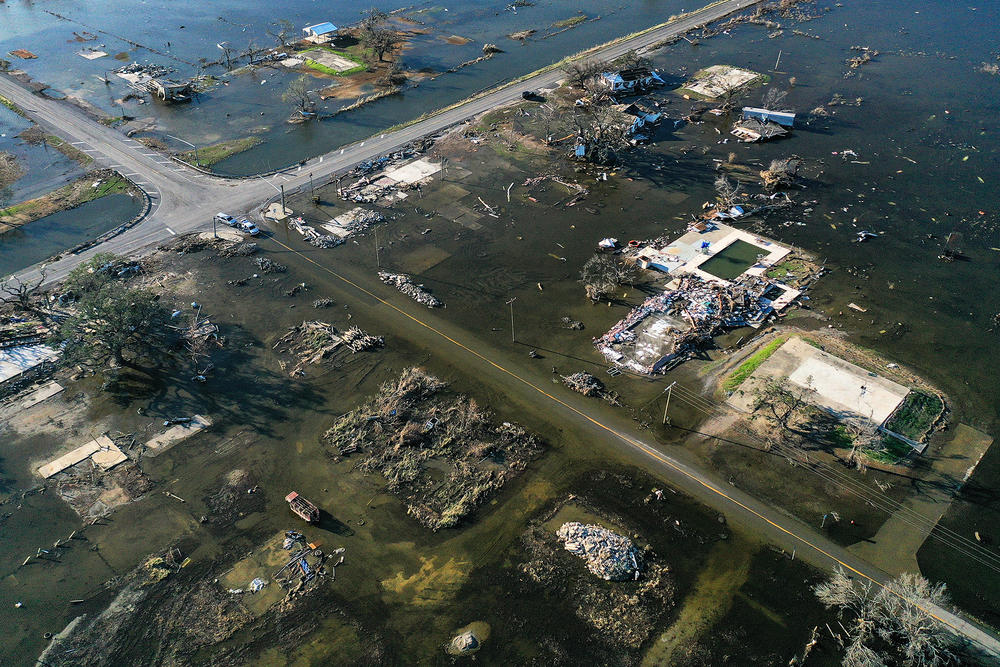Section Branding
Header Content
A New Hurricane Season Brings A New Threat: Carbon Monoxide Poisoning
Primary Content
Forecasters say the Atlantic hurricane season, which begins June 1, is likely to be busier than usual. After touring the National Hurricane Center in Miami, the new head of the Federal Emergency Management Agency, Deanne Criswell had a message to the public.
"Last year was a record season," she said. "We don't know what this season is going to be. But it just takes one storm."
There were 30 named storms last year, the most ever. Twelve storms made landfall in the continental U.S. last year, another record. The most powerful, Hurricane Laura, produced a 17-foot storm surge, the highest ever recorded in Louisiana. National Hurricane Center director Ken Graham believes accurate forecasting and urgent, clear messaging helped minimize fatalities.
"If you remember the words that we used, 'unsurvivable,' we don't take that lightly. And in the end, [there was] not a single storm surge fatality in Hurricane Laura," Graham said.
Although there were no deaths from storm surge, 28 people died from Laura, and almost all of them once the hurricane passed. The storm wrecked the electrical grid in Southwest Louisiana, leaving communities without power for weeks. Fourteen of the deaths were caused by carbon monoxide poisoning from unsafe use of emergency generators.
At a news conference the day after the storm, Lake Charles Police Chief Shawn Caldwell said five deaths occurred in a single household. He had a message for anyone using a generator.
"Guys, keep it away from your home," Caldwell said. "Don't put it anywhere near a covered awning, a porch or a garage. Chain it to a tree if there's one left out in the yard. But don't let a generator cost your life."
For years now, forecasters have warned people that flooding from hurricanes poses the greatest danger to coastal residents, accounting for 90% of the deaths. Storm surge remains the greatest threat to lives and property in a hurricane.
But NHC Director Graham says it's becoming clear that forecasters and emergency managers need to pay more attention to threats after the storm, including improper use of generators.
"We've had since 2017, 14 hurricane landfalls. Five were major hurricanes. And we've had seven storm surge fatalities," he says. "So in the last four years, we've lost more people to carbon monoxide poisoning after the storm than we have to storm surge."
At least 39 people have died after hurricanes from carbon monoxide poisoning since 2017.
As hurricane forecasting has improved, people who live near the coasts now get earlier and more accurate information about how to prepare safely. That's helped reduce the number of deaths from direct causes like flooding and high winds.
Ed Rappaport, deputy director of the National Hurricane Center, says as a result the percentage of people who die from indirect causes, such as heart attacks, vehicle accidents, electrocution and carbon monoxide has risen. In a study he conducted several years ago, he found indirect causes were responsible for almost half of hurricane deaths.
In some storms, like Hurricane Maria which hit Puerto Rico in 2017, Rappaport says the percentage is much higher. The death toll there is still a matter of dispute, but is believed to be in the range of 3,000 dead.
"It appears that most of the deaths are going to be indirect," Rappaport says. "Most of the deaths appear to be...associated with the aftermath of the storm, the recovery period, the long times without power."
There's an irony in all this, he says. Asking the public to prepare for a storm or to evacuate, while necessary, carries its own risks.
"In the long-run, there's no doubt that we're contributing to a safer society," Rappaport says. "But there are these secondary, conflicting aspects we have to address."
The National Hurricane Center is working through its messaging and outreach to focus attention on generator safety to reduce deaths after a hurricane. The problem is that few people pay attention to Hurricane Center warnings after a storm has passed.
The U.S. Consumer Product Safety commission has its own generator safety campaign. The federal agency says anyone using a generator should have carbon monoxide alarms with battery backup on every level of the home. But in a study, the commission found that in the vast majority of homes with carbon monoxide fatalities, alarms weren't present. And in homes with fatalities where there were alarms, researchers say in most cases they didn't sound because the batteries weren't working.
One key to reducing indirect deaths from hurricanes may be improving power grids and other infrastructure. The Biden administration announced recently it's sending a billion dollars to help communities become more resilient and rebound quicker from hurricanes and other extreme weather events.
Copyright 2021 NPR. To see more, visit https://www.npr.org.


